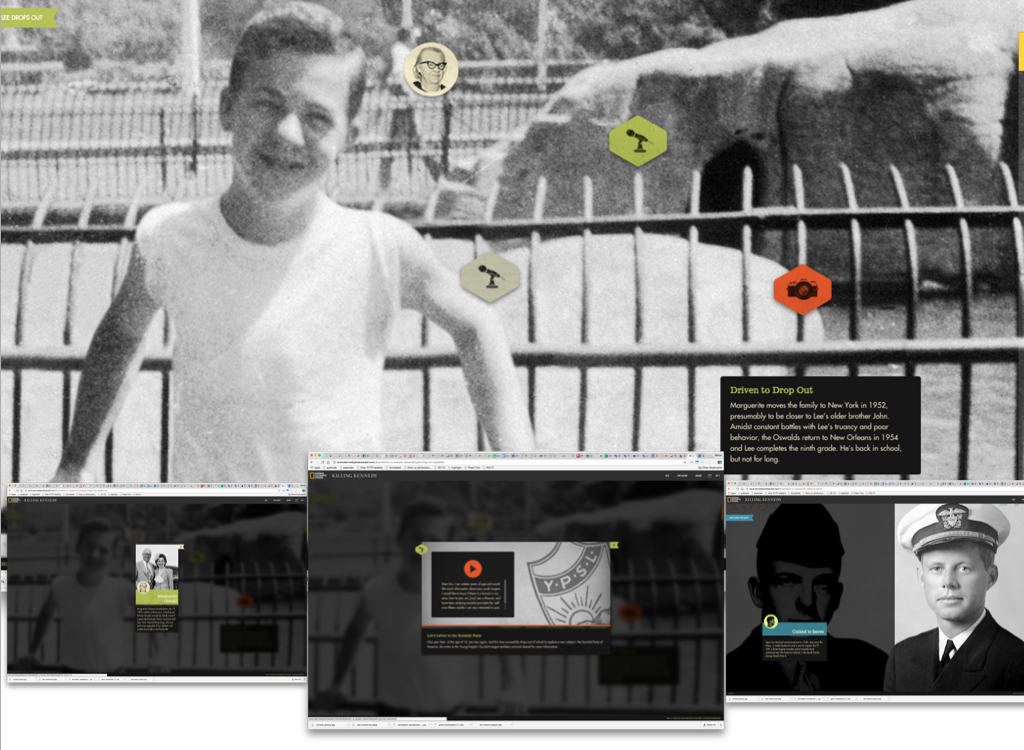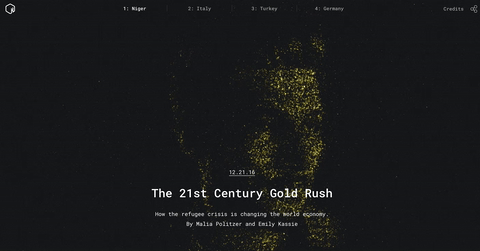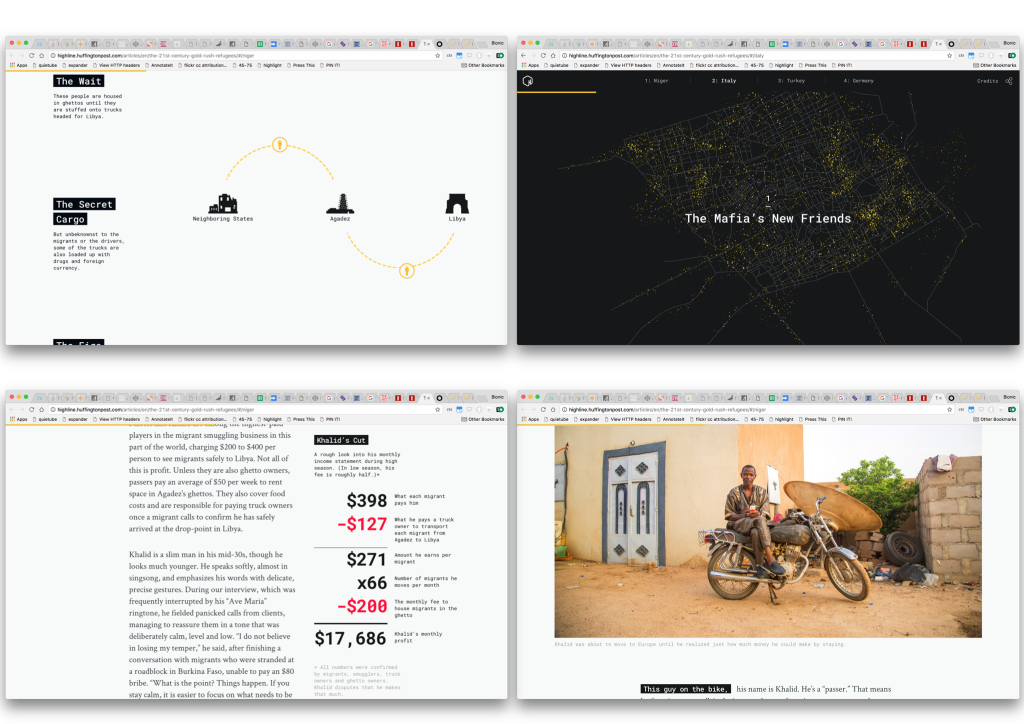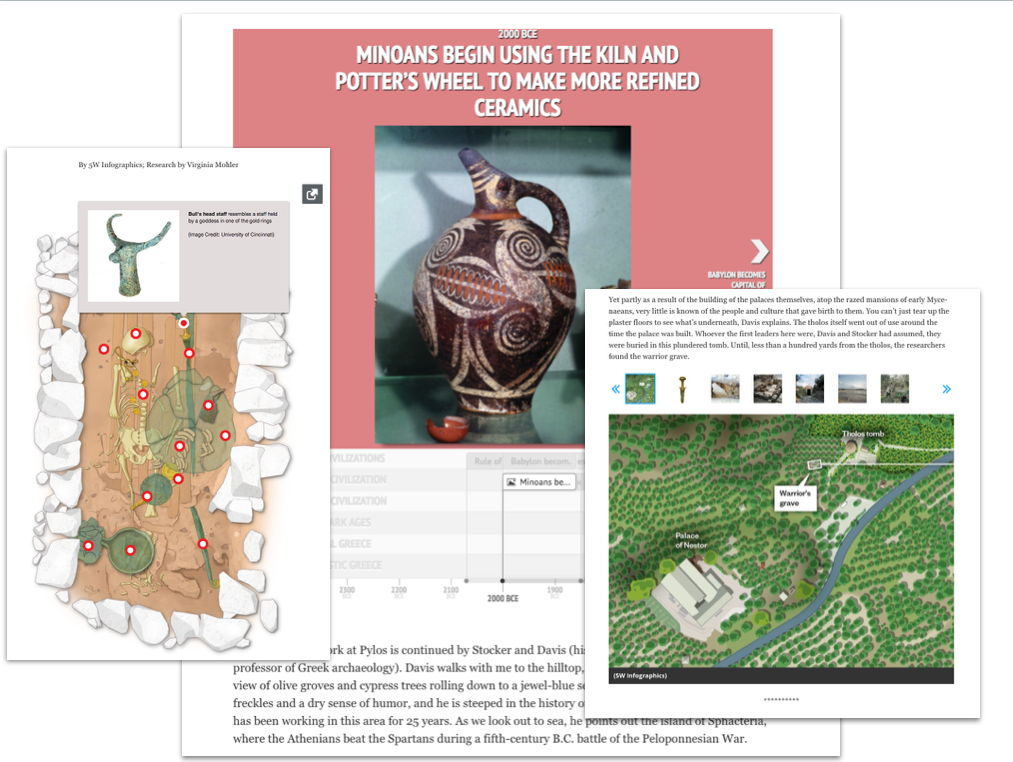In working with students in the Digital History course, we’ve repeatedly bumped up against the idea that it’s harder to make a cohesive argument on the Internet (vs a traditional paper) or that constructing a web-based exhibition abdicates controls you have in physical space. There are frequent examples of archives referenced in the texts (Valley of the Shadow for instance) but for various reasons (age, limited time/space/knowledge) there aren’t many decent examples of constructing a multimedia argument or experiential/immersive examples. So here’s an attempt to show some sites that are far more than a-bunch-of-stuff-on-the-Internet and some elements that help them do that.

Kennedy/Oswald
It’s a bit heavy on the parallax for my taste but it’s a pretty direct parallel to a museum exhibit. It sets out to parallel the lives of Kennedy and Oswald reinforcing that parallel with visual metaphors (split screen transitions, similar images etc.) to reinforce that concept. There is a main text-based storyline, music to reinforce a certain mood,1 and the ability to see supporting elements by clicking on various items. The movement through the site is very guided. The links are kept within the site and remain contextualized rather than leading to other sites. The ancillary materials are a mixed bag of audio, images, video, and mixed media. Digital primary source materials are used throughout to drive the narrative.

21st Century Gold Rush: Refugees
A Huffington Post piece that looks at the impact of the refugee crisis on the world economy through four different geographical areas. There is a clear argument and interesting mix of media that explain and support both the facts of the article and the emotional resonance. While this is modern journalism, it tackles many of the same issues that would be dealt with in a history paper and supports the narrative with maps, quotes, images, video, diagrams, and data.


Homer and Harold
The story of a court case and its aftermath. There’s a nice mix of primary source materials. I particularly liked the use of an alternate font and color for the court transcript elements and how they were juxtaposed against the article itself.

What We Thought We Knew About the Roots of Western Civilization
While less cinematic than some of the other examples this is a strong article that uses timeline.js, a slideshow feature, maps, and an interactive diagram of the grave to provide a lot of information.
Clearly, these sites were serious commitments of time, resources, and expertise. Not everything can be that but I find that seeing examples that are pushing the envelope helps me readjust my aim to higher things. Paying attention to how they transition between supporting topics, how font/color/animations work together, how media supports the text (and vice versa) — when done well it’s impressive stuff. I also take note of what frustrates me2 or things I don’t like.footnote>auto-playing music I also use Emmet Re:view to see how they dealt with displaying some of this complexity in multiple screen sizes.
I tend to find these examples on the edge of or firmly in the field of journalism.3 I can’t help but see strong commonalities between education and journalism. Some of my favorite tools for educators are built for journalists by the Knight Lab.
1 I’m not a fan but . . . it is something you can control and think about.
2 excessively controlling my scrolling progress
3 This is a great site for long form journalism.

Kennedy/Oswald is impressive on many levels. I wish it weren’t tied in to the O’Reilly project, and I got stuck within the site’s navigation, but I do think it conveys a compelling thesis using relevant primary sources. The conception of it is as instructive as the actual presentation.
Agreed. I’m not a fan of the navigation either but it is a pretty good example of forcing a particular path while still giving a few optional elements to explore more deeply.